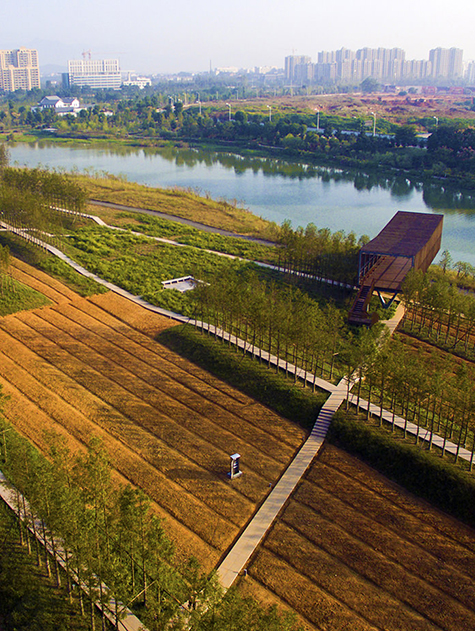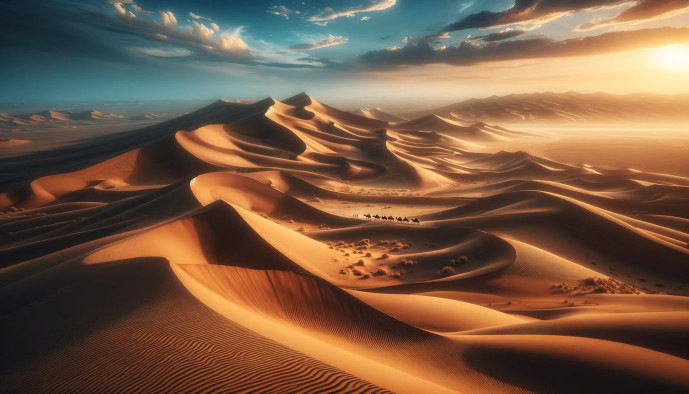Desert Soundscapes: Exploring Acoustic Ecology in Arid Environments

The desert, often perceived as a realm of silence, holds a rich and often overlooked acoustic dimension. Beyond the visual spectacle of vast dunes and resilient flora lies a world of sound, crucial for understanding biodiversity, ecological processes, and the impact of climate change. Acoustic ecology, the study of soundscapes, offers a unique lens through which to explore these arid environments. Join us as we journey into three distinct desert landscapes, each with its own unique sonic signature, to uncover the hidden symphony of the desert. From the profound silence of the Empty Quarter to the singing sands of the Simpson Desert, prepare to listen to the desert in a whole new way. We will learn about the best methods for recording these soundscapes, and the threats facing them, encouraging responsible engagement with these valuable environments.
Silence and Human Impact in the Empty Quarter (Rub' al Khali), Saudi Arabia
The Empty Quarter, or Rub' al Khali, is one of the largest continuous sand deserts in the world. Its sheer scale and aridity create an environment where silence reigns supreme. In its most pristine state, the Empty Quarter presents an acoustic void, a stark contrast to the sound-saturated environments most people experience daily. However, even this remote landscape is increasingly vulnerable to human impact.
The Sound of Near-Silence
Imagine standing amidst towering dunes under the relentless sun. The air is still, and the only sound is perhaps the faint whisper of wind. In the Empty Quarter, the absence of sound is almost palpable. Every rustle, every footstep, every breath becomes amplified in the vast emptiness. This extreme silence highlights the fragility of the acoustic environment and its susceptibility to disturbance. It’s a challenge and a draw for those seeking to experience true quiet.
Anthropogenic Noise: A Growing Threat
Unfortunately, the pristine silence of the Empty Quarter is under threat from increasing human activities. Oil extraction, exploration, and off-roading contribute to noise pollution that disrupts the natural soundscape. The roar of engines, the clanging of machinery, and the rumble of vehicles intrude upon the delicate acoustic balance. The introduction of anthropophony, or human-caused sounds, can have detrimental effects on any wildlife that may be present, masking their communication signals and disrupting their behavior.

Recording Near-Silence: Technical Considerations
Capturing the near-silence of the Empty Quarter requires specialized equipment and techniques. To record the subtle sounds of this environment, a high-quality microphone with a low self-noise rating is essential. A model like the Neumann RSM 191 is well-suited for this task. Recording at a high bit depth and sampling rate, such as 24-bit/96kHz, will ensure that even the faintest sounds are captured with accuracy. Position yourself away from any potential sources of noise, and use a windscreen to minimize wind interference.
Experience the Silence: Beyond Rub' al Khali Camp
Beyond Rub' al Khali Camp offers a unique opportunity to experience the profound silence of the Empty Quarter firsthand. With efforts to minimize both light and sound pollution, the camp provides an ideal setting for immersing oneself in the natural soundscape. Consider recording the sunrise from the camp, focusing on capturing the quietest time of day before human activity begins to increase.
Call to Action: Reflect on the importance of preserving silence in natural environments. What steps can we take to mitigate noise pollution and protect these valuable acoustic resources?
Biophony and Climate Change in the Sonoran Desert, Arizona/Mexico
In stark contrast to the Empty Quarter, the Sonoran Desert teems with life, resulting in a surprisingly diverse biophony. This vibrant soundscape is a testament to the resilience and adaptability of its inhabitants. However, climate change poses a significant threat to this delicate acoustic balance.
A Symphony of Life
At dawn and dusk, the Sonoran Desert awakens with a chorus of sounds. The "dripping" song of the cactus wren, the drumming of Gila woodpeckers on saguaro cacti, the buzzing of cicadas, and the mournful howl of coyotes create a rich and complex soundscape. Bats rustle amongst the saguaros, while desert grasshoppers chirp and click, all contributing to the unique sonic signature of this environment. This is the biophony, the collective sound produced by living organisms.

Climate Change: A Shifting Soundscape
The delicate acoustic environment of the Sonoran Desert is increasingly vulnerable to the effects of climate change. Drought, heat waves, and altered precipitation patterns are impacting species behavior and causing shifts in the timing and intensity of vocalizations. For example, birds may alter their breeding cycles in response to changing temperatures, leading to changes in their song patterns. The distribution and abundance of insects, another crucial component of the soundscape, are also affected by climate change. A formerly vibrant area may become silent as the wildlife moves away.
Capturing the Sonoran Soundscape: Technical Guidelines
To capture the peak of the Sonoran Desert's biophony, record at dawn and dusk. These are the times when animal activity is typically at its highest. Use directional microphones, such as the Sennheiser MKH 416, to isolate individual animal sounds. Listen for the distinctive sounds of the cactus wren, the rustling of bats, and the howl of coyotes. If recording during the summer monsoon season, be sure to capture the unique sounds of rain and thunder.
Experience the Biophony: Arizona Sonora Desert Museum's Desert View Village
The Arizona Sonora Desert Museum's Desert View Village provides an ideal location for experiencing and recording the Sonoran Desert's soundscapes. With its commitment to conservation education, the museum offers a unique opportunity to learn about the ecology of this environment. Participate in soundwalks led by indigenous guides, who can provide insights into the cultural significance of desert sounds.
Call to Action: Participate in citizen science efforts to monitor the impact of climate change on Sonoran Desert soundscapes. Your observations and recordings can contribute valuable data to scientific research.
Singing Sands and Dreamtime Stories in the Simpson Desert, Australia
The Simpson Desert, located in the heart of Australia, is home to a unique acoustic phenomenon: "singing sands." This phenomenon, combined with the rich cultural heritage of the Aboriginal people, creates a truly captivating soundscape.
The Rumble of the Dunes
The "singing sands" of the Simpson Desert are a remarkable example of geophony, the sounds of the earth. When sand dunes move, they can generate low-frequency rumbling sounds that can travel for kilometers. These sounds are thought to be caused by the friction between sand grains as they slide down the leeward side of the dunes. The exact mechanism is still being studied, but the effect is undeniable.
Dreamtime and Acoustic Lore
For the Aboriginal people who have lived in the Simpson Desert for thousands of years, the landscape and its sounds are deeply intertwined with their Dreamtime stories. The "singing sands" are often seen as the voices of ancestral beings, and the desert itself is a living entity with its own unique spirit. Aboriginal rock art and other cultural artifacts often depict the desert landscape and its sounds, providing insights into the cultural significance of this environment.
Recording the Singing Sands: A Unique Challenge
Capturing the low-frequency sounds of the "singing sands" requires specialized equipment. Contact microphones, such as the Aquarian Audio H2a-XLR Hydrophone (used as a contact mic), can be attached directly to the sand dunes to amplify the vibrations. The best conditions for recording "singing sands" are dry sand and strong winds. Infrasound recordings may also be possible, capturing frequencies below the range of human hearing. Be aware that "true" silence is hard to come by, as even light breezes can disturb the sand.
Experience the Dreamtime: Arkaba Conservancy's Homestead
Arkaba Conservancy's Homestead offers an opportunity to immerse yourself in the Simpson Desert landscape and learn about its cultural significance. Collaborate with local Aboriginal guides to learn about the Dreamtime stories associated with the desert and its sounds. A rich cultural exchange can enhance your understanding of the environment.
Call to Action: Support sustainable tourism initiatives that respect Aboriginal culture and protect the Simpson Desert's unique environment.
Overall Call to Action:
Join the "Listening Planet" project! Download the Listening Planet app ([link to app]) and contribute your own environmental sound recordings. Your contributions can help scientists better understand and protect the world's soundscapes. All data will be openly available for analysis, fostering collaborative research. To upload recordings, ensure they are tagged with relevant metadata (location, date, time, species). Remember to record responsibly, minimizing disturbance to wildlife and respecting local regulations.